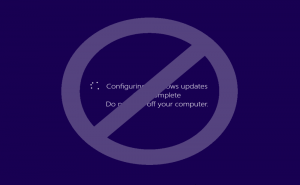 How to use a firewall
How to use a firewall
In a previous guide, we've shown you how to protect yourself from DDoS attacks, but that's not the only threat that you have to deal with on the Internet. In fact, the more places you visit on the Web, the more you're exposed to unsavory websites that create background connections to your computer in an attempt to steal your data. Furthermore, a lot of infected or malicious applications will also try to create connections to the Internet and send the data they've gathered to their owners. A firewall will help you block any unwanted connection, so if you want to be safe online, you should know how to use one:
Step 1
First, you need to decide which firewall you want to use: if you value security very highly, then you might want to choose a third-party solution like ZoneAlarm Pro Firewall, BitDefender Internet Security or Kaspersky Internet Security. However, if you're a regular user and you don't deal with lots of confidential information, the Windows 10 default firewall will work just fine.
Step 2
Install the firewall you've chosen or go to Control Panel --> System and Security --> Windows Defender Firewall, click on the Turn Windows Defender Firewall on or off button, then check the corresponding boxes to have the application notify you whenever a connection or application is being blocked or simply block all connections and apps. Once that's done, reboot your PC.
Enabling the Windows Defender Firewall
Step 3
Read through the prompts that appear on your screen and decide which applications/connections should be blocked and which should be allowed to go through. In case you're having trouble deciding, use Google or another search engine to determine their trustworthiness.
Step 4
For more control, you can use the Advanced Settings of the third-party firewall you've chosen or of the Windows Defender Firewall to manually create inbound or outbound rules and monitor your firewall:
- Inbound rules set which of your connections are allowed to access files from your computer; for example, you would want your torrent client to access your files in order to seed them.
- Outbound rules decide which of your installed applications are allowed to connect to the Internet.
- The Windows Defender Firewall Monitoring tab displays your current settings, firewall status as well as security associations.
Windows Defender Firewall advanced settings
Conclusion
This is it, friends, now you know how to use a firewall to protect your computer. The question is: would you pay for a third-party firewall or would you prefer keeping things simple and rely on the default Windows 10 firewall? Let us know in the comments below.
Alternative downloads
-
 BitDefender Internet
Security
$20
windows
BitDefender Internet Security 2010 offers, you and your family all the security you need on the Internet...
Download
BitDefender Internet
Security
$20
windows
BitDefender Internet Security 2010 offers, you and your family all the security you need on the Internet...
Download
-
 Kaspersky Internet
Security
$59.99
windows
Kaspersky Internet Security comes packed with multiple layers of protection to identify...
Download
Kaspersky Internet
Security
$59.99
windows
Kaspersky Internet Security comes packed with multiple layers of protection to identify...
Download
-
 ZoneAlarm Pro
$69.95
windows
Popular anti-virus program that detects and removes viruses...
Download
ZoneAlarm Pro
$69.95
windows
Popular anti-virus program that detects and removes viruses...
Download






How do I STOP Windows Firewall Security from blocking almost EVERYTHING I have NO control over my personal Computer I had MalwareBytes but Windows Firewall makes it unable to use !!
Cargame
jc bccbbncncb,